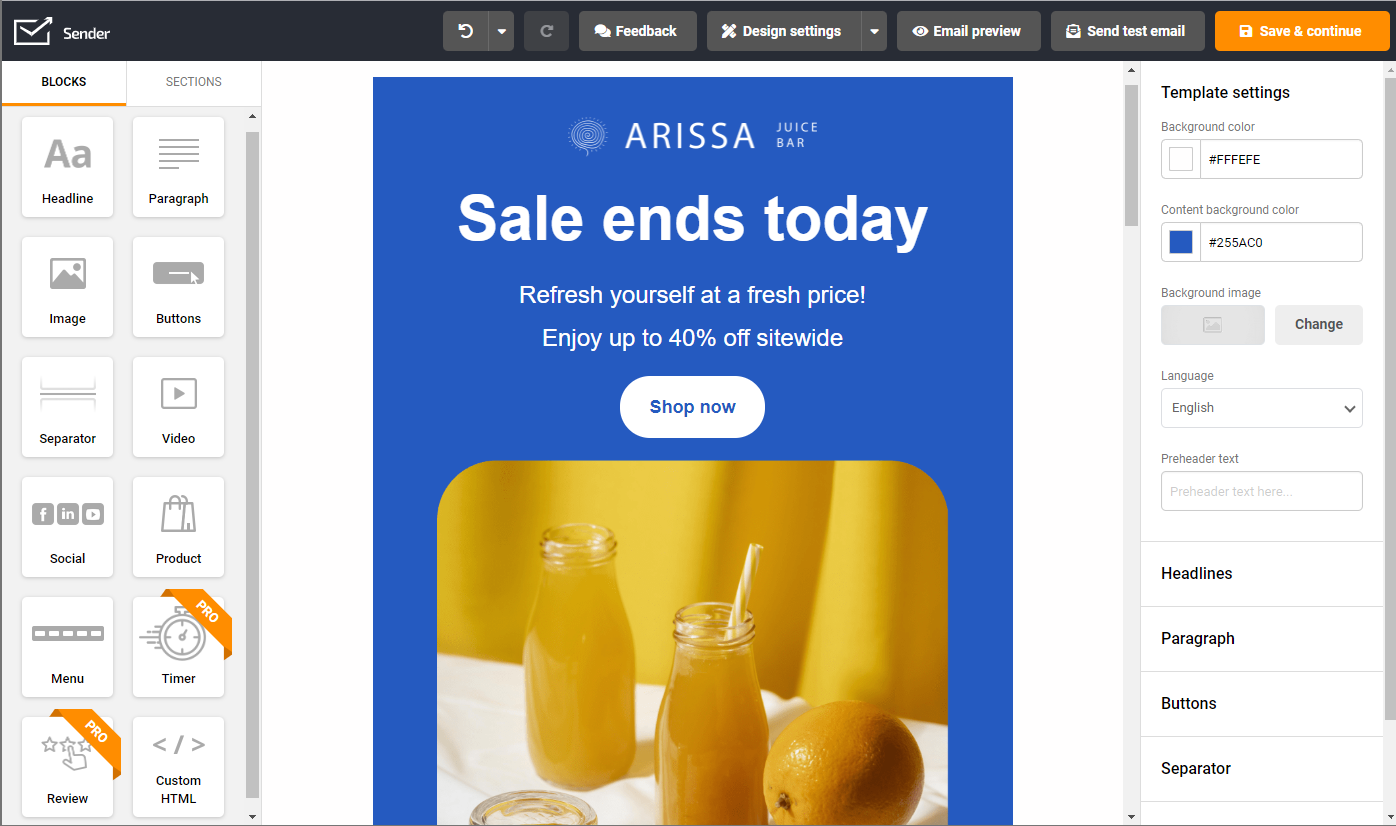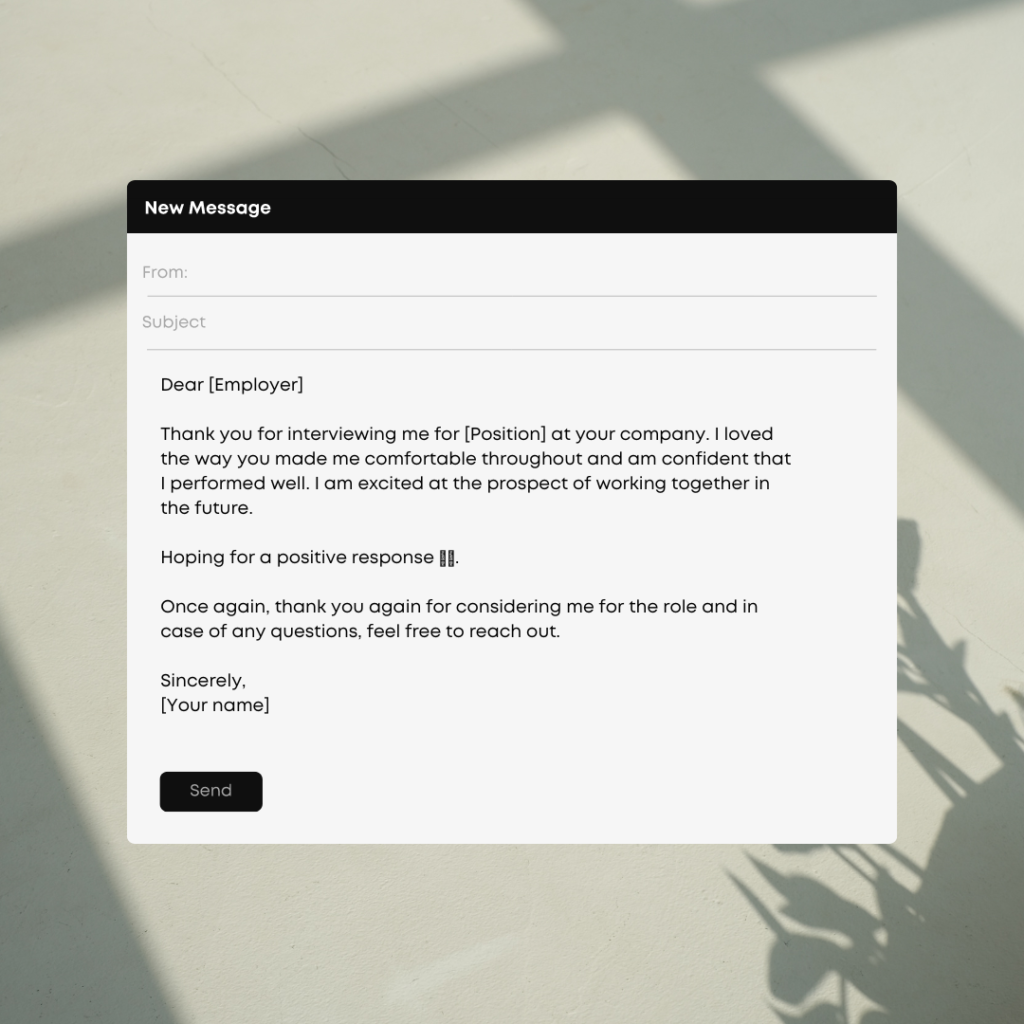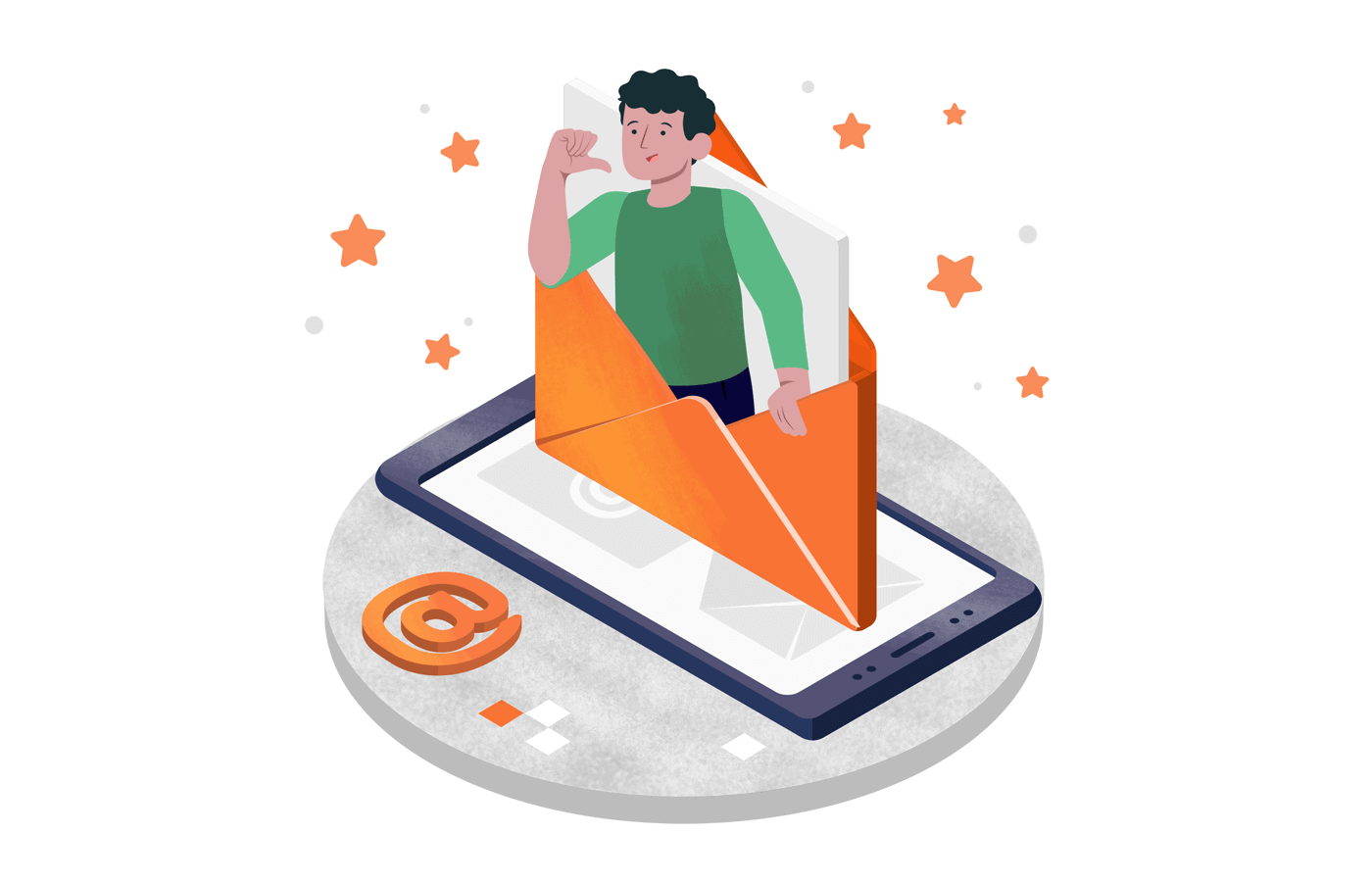Have you ever dreamed of writing the perfect introduction email? If you’re working actively, you will have had this dream forever.
Writing a great introduction email is an art, and a single skill can open many gateways of opportunities when done well. An introduction email can be the first step toward building a solid professional relationship.
This blog shares 11 examples of perfect email introductions based on proven communication etiquette and best practices.
What is a Self-Introduction Email?
Before we share the templates, let’s look at what is a self-introduction email first. A self-introduction email is a great way to introduce yourself or a company to a stranger and make them feel valuable to you. These emails introduce a person, share their story, provide background, or ask/offer a favor.
Self-introductions are sent to grab a chance to talk about a business relationship, extend a helping hand, or just let the other person know about you. These emails can warm up a cold prospect and build trust.
Look at self-introduction emails as cold emails you send to someone to tell them about you. The goal is to get someone to engage with you and take the next step in starting a professional relationship.
Formal Email Introduction Examples
When introducing yourself over email, sometimes you fall short of words despite many thoughts in your mind. Here are a few formal email templates based on known best practices to send to the client, prospect, colleague, or anyone to who you want to introduce yourself:
Job Application Email Template
One of the best ways to stand out from hundreds of applicants for a job role is to send out a formal introduction email to the recruiter (or a decision maker) at the company. Use the following template to reach out. Remember not to be too pushy in your email; don’t forget to attach your resume.
Subject: Hey [First Name]! Can I work with you at [Company Name]?
Hi [First Name],
[Your First Name] here. I have been following your journey at [Company Name/Product Name] on [Platform you Follow them] since [Period]. I got to say that you guys are doing a really great job at [Company Name].
I’ve worked in the industry for [number of years], through which I’ve worked with big names like [your client/project list].
I was working on a [project] and saw that you’re building something similar. I would like to work closely with you on the project and am attaching my resume and portfolio for consideration.
If you like my work, I’d be happy to hop on a call to formally pitch my candidature.
Looking forward.
Thank you.
— [Name]
Make a powerful first impression—use ready-made templates and an easy email builder to craft emails that get replies.
Free plan available for up to 2,500 subscribers and 15,000 emails per month!

Open Position Inquiry
It’s common knowledge that most jobs are filled before being advertised on job portals. Sometimes, a position is open, but hiring managers and HRs don’t have the bandwidth to broadcast it publicly.
Email a formal inquiry about an open position to explore the possibility of getting a job at your dream company. Here is an open position inquiry introduction email template:
Subject: Hey [First Name], Are you looking for a pro [job title]?
Hey [First Name]
My Name is [First Name], and I am reaching out to inquire if your company has an open role for [job title].
I was looking at your [project/website/future roadmap] and felt you might be planning to hire a [job title] soon. I’ve worked with big names like [your client/project list] over the last [professional experience, in number of years]
I’d love to be interviewed and show you how I can be useful. I’d be happy to hop on a quick call to discuss the possibility. Till then, my portfolio is attached for your reference.
Thank you.
Sincerely,
[Your full Name and LinkedIn link]
Information Request
Sometimes, you need to reach out to a peer, customer, or stranger seeking information they have access to. This situation commonly arises when trying to gather market research data. Use the following formal email template to seek information from anyone:
Subject: Hey [First Name]! Need your feedback/input/help [Not Spam]
Greetings!
My Name is [Name], and I work as a [position] at [company name]. This might sound like spam, but I am genuinely interested in some information that you may have.
If you have a few minutes and can share with me about [details of the information needed], I’d be highly obliged.
You can also click the link [survey/feedback link] to answer a few questions quickly, and I will have everything I need.
Please reply to this email if you’ve got any other ideas about how I can source the info I need.
Thank you in advance.
Regards
[Your Name]
Professional Introduction
A professional introduction email is sent to anyone you know (or want to know) professionally to introduce yourself. Professional emails are sent to prospective partners, peers, and potential customers, telling them about you, your products, services, or what you seek.
For example, a personalized professional introduction is a great way to stand out from other candidates if you’re applying for a job. Here’s a template to professionally introduce yourself over email:
Subject: [First Name] here seeking help regarding [reason for introduction]
Hello [First Name]
My name is [First Name], and I work as a [job position/title] at [Company Name].
I’ve been an active member of the [mutual community/network/event] and am eager to get in touch with you about [reason for introduction/conversation].
Let me know if you’re free sometime next week for a quick conversation.
Looking forward.
Thanks.
Sincerely,
[Your Name]
Self-introduction Email Sample
A self-introduction is a great way to make a good first impression with a new contact. Such emails are useful in starting a conversation, building a rapport, and warming them up. It helps to let them know who you are, what you do, and why they should talk to you. Here’s a sample:
Subject: Hey [First Name]. Keen on Knowing You Better.
Dear [First Name],
[First Name] here, and I am reaching out to introduce myself as I recently joined/met/discussed [recipient’s product/company name/mutual contact].
I have been working on some great projects and clients in the industry for [number of years] and have worked with some great brands like [your client/project list]
We can meet up sometime to discuss the possibility of chasing our common goals/ambitions and do some great things together.
If you’re free this week, let me know.
Looking forward to hearing from you.
Best,
[Your Name]
Formal Email Pitch
An email pitch is a cold email sent directly to someone you don’t know. You’re trying to reach out, expecting a response on your proposal, asking for feedback on a project, or seeking a meeting with someone. Generally, such emails are sent by startup owners to investors seeking a meeting. Here’s an example:
Subject: [Product Name] Says 👋 & Loves Your Approach on [Mutual Interest]
Hey [First Name]!
[Your First Name] here, and I wanted to reach out to you regarding [project name] I have been working on for the last [number of months, in number of months].
I read about your take on [mutual industry interest] and feel that you’d like to see what we’ve been up to in this regard. I have attached a brief pitch document for you to check and see if this is worth your time.
We’ve already put a lot of effort into [project name], and your input/feedback/guidance will help us stay motivated to work towards our shared goal.
I’d be happy to hear from you and look forward to meeting you.
Best,
[Your Name]
Networking Email
A networking email is sent to introduce yourself to someone you’d like to stay in touch with in the future. The most common use case of such an email is sending it to someone you want to connect to and engage with, in person or on a social media platform like LinkedIn or Facebook. Refer to a mutual connection to start a conversation and build rapport. Here’s an example of such an email:
Subject Name: Love your Ideas. Keen to Connect on [Platform of Interest]!
Hey [First Name],
My name is [First Name], and I’ve been on LinkedIn for [number of years]. I felt like connecting with you as we both work in/as a [profession/industry].
Your insights about [common interest topic] attracted me to your profile and made me eager to learn more about your journey and products.
I’d be happy to share my thoughts and possibly have a video chat about [topic/company/product] sometime soon.
Eager to connect.
Thank you.
Regards,
[Your Name]
Sales Introduction Email
A sales introduction can be used when you’re looking to sell something to a buyer or prospect and want to reach out to warm up a lead. An effective sales email introduction can help you break into the door of a potential prospect. It’s a formal email seeking permission to start a dialogue with someone.
Subject: Hey [First Name] 🙋🏻You no longer need to struggle with [pain point] anymore!
Dear [Name],
Greetings!
This is [Your Name] here, [Company name]. I work on some interesting ideas every month and was reading your blog post on [blog topic]. I’m pretty impressed by what you’ve shared and found out you’re facing some trouble with [pain point/issue].
We’re currently building [Product Name], which solves your exact problem without increasing workload or financial spending.
Would you like to learn more about [our product/service]? If so, I’d happily schedule a demo or discuss your needs and goals.
Please let me know if there’s anything else I can do for you.
Best regards,
[Your Name]
Company Introduction Email
A company introduction is a formal email sent to a prospect introducing your company, value proposition, and/or yourself in the context of what you do. It’s a great opportunity to tell someone about your business and how you could be useful to them. It’s a chance to introduce yourself to a potential prospect and build a relationship. Here’s a basic template for an introductory company email:
Subject Name: [Company Name] Can [Save You Time/Bring Down Cost/Achieve Efficiency]. Discover More Now.
Hello [First Name],
My Name is [First Name], and I work at [Your Company Name]. I saw that you continuously seek support and assistance in [industry].
I am reaching out to introduce you to [your company name]. We provide [service/product set] for [target audience] to help them [your prospect’s pain point or growth goal].
I’ve been following you on [Linkedin/LinkedIn] and was wondering if we could quickly schedule a call to discuss if you need [service set].
I am available for meeting anytime during the week.
Thank you.
— [First Name]
New Employee Self-introduction
A self-introduction email is useful when you’ve joined a new company and want to share your work experience and greet your new colleagues. These emails are generally sent during the onboarding process and are crucial to make collaboration in the future easier. Here’s a template that to introduce yourself.
Subject: [Your First Name] Here! Reaching Out to Say a Quick Hello!
Dear [colleague’s Name],
I hope you’re having a good day!
My name is [Your Name], and I am one of the new hires at [Name of your company].
Previously, I worked with [previous company name], during which I’ve worked with [your client/project list].
At [Current Company Name], my job will be to [job responsibilities]. I will be reporting to [Reporting manager], and you can dial in at [extension number] for a quick response.
Looking forward to working with you in the future.
Thank you.
Regards
— [Your Name]
Also read: 5 New Employee Announcement Email Template Examples
Newsletter Introduction Examples
Newsletters are one of the most effective ways to share the latest updates, engage your prospects, and keep subscribers hooked with the latest news about products and happenings in your company. A newsletter introduction email is sent to anyone you feel would be interested in signing up for your newsletter. Here’s a template:
Subject Line: Fellow Writer & Admirer Reaching Out with a Request OR Loved Your Piece on [Topic]. Care to Listen to Me?
Greetings!
My name is [Your First Name], and I run a newsletter called [Name of Your Newsletter].
I came across your blog post on [website/article] and loved your take on [topic].
I thought I’d get in touch to let you know about my newsletter as I write in a similar niche.
We both are preaching/writing similar ideas, so I felt like reaching out. I regularly post hidden insights that you can use for your future blog articles in my monthly newsletter.
You can subscribe to my newsletter by signing up at [link to newsletter subscription page].
If you’ve got any questions, email me at [email address]. Once again, it was a delight to read your thoughts. I hope you sign up for my newsletter. 🤞
Best Regards
[Your Name]
How To Write An Introduction Email?
The templates shared above must’ve given you a fair idea about how to write an introduction email. If you’re unsure, here are a few writing tips to help you create the perfect email introduction for yourself.
- Professional subject line. Keep your subject line short, straightforward, and clear. If possible, never miss a chance to personalize your subject lines;
- Introducing yourself in an email. Introduction emails are all about introducing yourself. So, never miss out on sharing details about who you are, what you do, your industry, and other essential details about yourself.
- Greeting. Start any introduction letter or email with an appropriate greeting or salutation. For example, you cannot call a stranger dear in your first email. Your recipient would appreciate receiving an email from a human (we always greet before we talk) who knows how to start a conversation well.
- Use the recipient’s name. Personalize your introduction email using the recipient’s Name. Don’t refer to them as ‘prospect/manager/team member.’ Use the opportunity to personalize your email copy using their first Name.
- Clarify your purpose for reaching out. Never keep your recipient wondering about the reason you reached out. Give a brief but specific explanation as to why you are emailing them upfront, and always be honest in your intentions.
- Include a CTA: If you send an introduction email seeking a response, never forget to add a contextual CTA. For example, if you’re expecting a reply, remind them to reply to the email by adding a call to action.
- Close the email with a polite request. Requesting the other person when you reach out for the first time is good. So, always give a professional closing to your email with a thank you and a polite request to help you out or reply to your email (or any other call to action).
- Sign-Off. Always sign off your email with your real credentials, and never forget to add full information about your contact details, company, and other personal information. This will reflect that you’re genuine and eager to stay in touch and build a long-term relationship.

Key Takeaways
- Always write in a polite and confident tone when you’re introducing yourself via email;
- Give special attention to your subject lines when sending an introductory email;
- Always remember the context and personalize the email when customizing a formal introduction email template;
- Never try to be spammy or pushy while sending someone an introduction email.
Also read:
